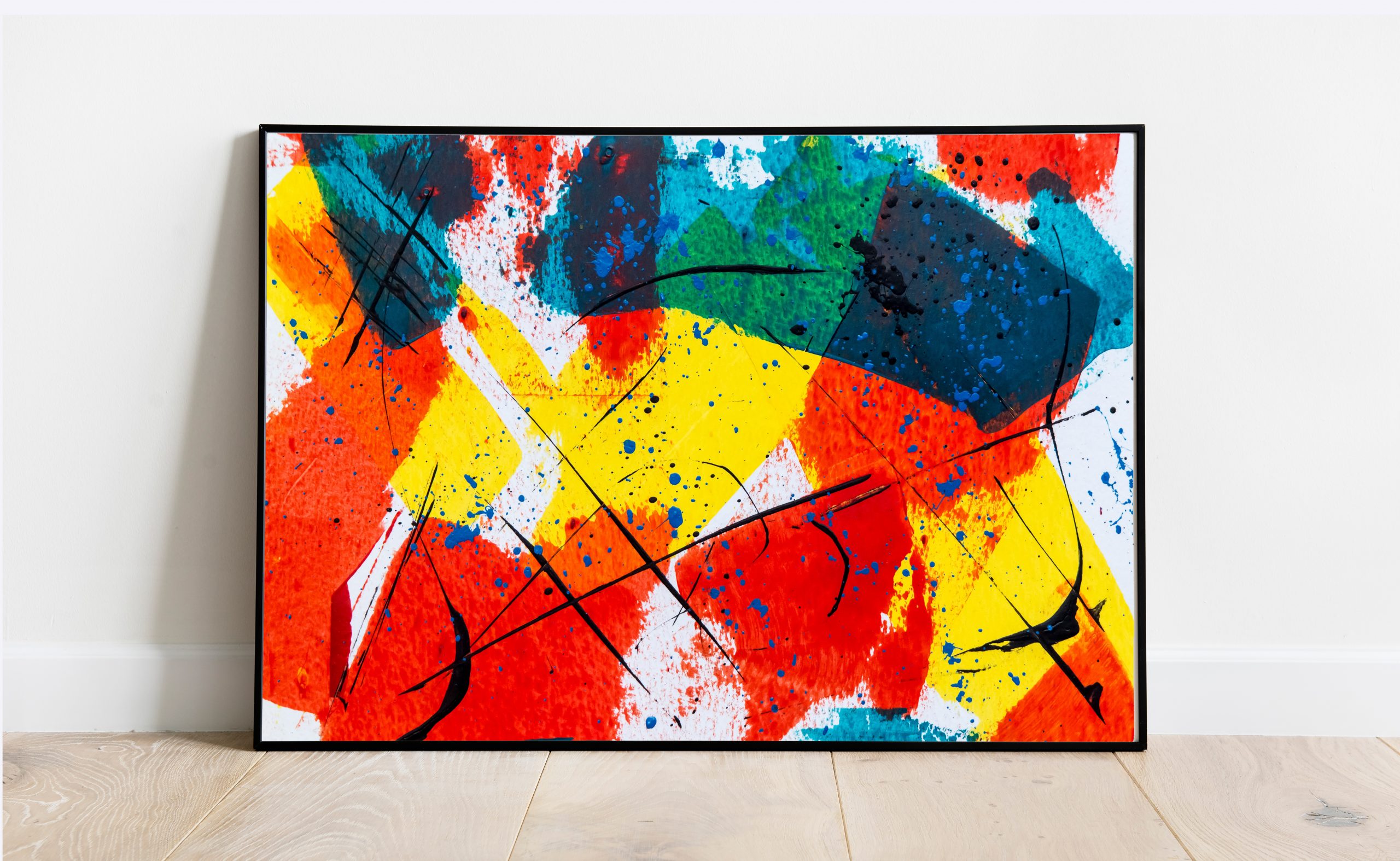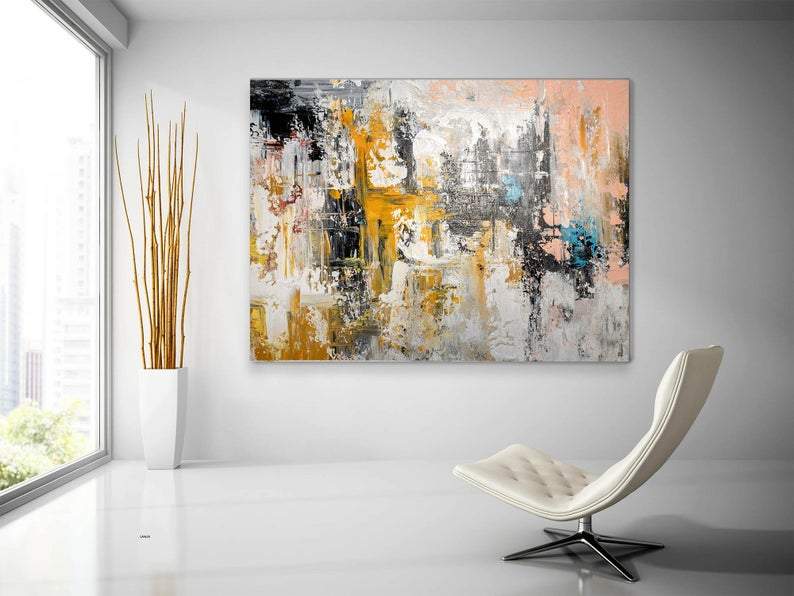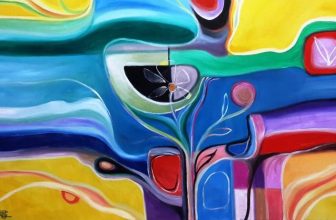
Discover the 5 secrets to understanding contemporary abstract art and its meaning in this insightful article. Learn how to appreciate and interpret this popular art form today.
If you’re searching for an exquisite Contemporary Abstract Art Collection or Modern Abstract Wall Art for sale, look no further than Cianelli Studios. Their stunning collection of contemporary abstract art offers a wide range of captivating pieces to suit any taste or space.
Introduction
Contemporary abstract art can be both fascinating and perplexing. For many, it’s a challenge to understand the meaning behind the shapes, colors, and forms that dominate this unique art style. Fear not! We’re here to unravel the mysteries of contemporary abstract art and help you gain a deeper appreciation for its beauty and significance. This article will explore five secrets to understanding contemporary abstract art and its meaning.
Definition of Contemporary Abstract Art
Contemporary abstract art refers to a wide range of artistic styles that emerged in the 20th century and continue to develop today. These styles often feature non-representational elements, such as shapes, lines, and forms, as well as innovative color combinations and textures. Unlike traditional art, contemporary abstract art often does not depict recognizable objects or scenes but focuses on the artist’s emotions, ideas, and experiences.
Brief History of Contemporary Abstract Art
The roots of contemporary abstract art can be traced back to the early 20th century when artists like Wassily Kandinsky and Kazimir Malevich started experimenting with Abstraction. The movement gained momentum in the post-World War II era, particularly in the United States, with the emergence of Abstract Expressionism. Since then, various styles and trends have evolved, contributing to contemporary abstract art’s rich and diverse world.

Understanding Contemporary Abstract Art
Secret 1: Understanding the Elements of Contemporary Abstract Art
Shapes, lines, and forms
One of the fundamental aspects of contemporary abstract art is the use of shapes, lines, and forms. These elements can be simple or complex, geometric or organic, and are often combined uniquely to create visually stunning compositions.
Colors and texture
Color plays a vital role in contemporary abstract art, as artists use various hues, shades, and tones to evoke emotions, create depth, and convey a sense of movement. The texture is another crucial element, adding visual interest and complexity to the artwork.
Space and composition
The arrangement of elements within a work of contemporary abstract art, as well as the use of negative space, contributes to the overall composition and balance of the piece. Artists often play with spatial relationships to create tension, harmony, or a sense of movement.
Secret 2: Exploring the Different Styles of Contemporary Abstract Art
Geometric Abstraction
Geometric Abstraction is characterized by simple geometric shapes, such as squares, circles, and triangles, arranged in a precise, orderly manner. Artists like Piet Mondrian and Josef Albers are known for contributing to this style.
Color Field Painting
Color Field Painting involves large, unbroken areas of color that dominate the canvas. This style often focuses on the emotional impact of color, with artists like Mark Rothko and Barnett Newman leading the way.
Gestural Abstraction
Gestural Abstraction, a subset of Abstract Expressionism, is characterized by spontaneous, expressive brushstrokes and drips of paint. Artists like Jackson Pollock and Willem de Kooning are associated with this style.
Minimalism
Minimalism, as the name suggests, focuses on simplicity and reducing elements in a piece of art. Minimalist artists like Agnes Martin and Donald Judd create works that emphasize geometric forms, clean lines, and the absence of ornamentation.
Abstract Expressionism
Abstract Expressionism is a movement that emerged in the 1940s and 1950s, characterized by the use of abstract forms, bold colors, and expressive brushstrokes. Artists like Jackson Pollock and Mark Rothko are considered pioneers of this movement.
Secret 3: Decoding the Symbols and Meanings in Contemporary Abstract Art
Representation vs. Abstraction
Contemporary abstract art often challenges the traditional notion of representation in art by focusing on Abstraction. Instead of depicting recognizable objects or scenes, artists use abstract elements to convey emotions, ideas, and experiences.
Cultural Context and Influences
To better understand contemporary abstract art, it’s essential to consider the cultural context and influences that have shaped the artists and their work. Various historical events, social movements, and artistic trends have all played a role in developing contemporary abstract art.
Personal Interpretation
One of the most appealing aspects of contemporary abstract art is its freedom for personal interpretation. Since the artwork does not rely on easily recognizable subjects, viewers are encouraged to find meaning and connection to the piece based on their experiences, emotions, and preferences.
Secret 4: Examining the Techniques and Processes in Contemporary Abstract Art
Painting
Contemporary abstract painters use various techniques, such as dripping, splattering, and layering, to create dynamic and visually engaging works. They also experiment with different types of paint, like acrylic, oil, and watercolor, to achieve unique textures and effects.
Drawing
Drawing is another essential technique in contemporary abstract art, with artists using various mediums like charcoal, pencil, and pastel to create intricate, expressive lines and shapes.
Collage
Collage involves the combination of different materials, such as paper, fabric, and photographs, to create a cohesive artwork. This technique allows contemporary abstract artists to explore different textures and juxtapositions within their compositions.
Mixed Media
Mixed media art incorporates multiple materials and techniques, like painting, drawing, and collage, to create innovative and multi-layered works. This approach enables contemporary abstract artists to push the boundaries of traditional art-making practices.
Sculpture
Contemporary abstract sculpture often features organic forms, geometric shapes, and unconventional materials like metal, wood, and glass. Artists like Henry Moore and Barbara Hepworth have significantly contributed to this field.
Secret 5: How to Appreciate and Interpret Contemporary Abstract Art
Tips for Viewing Contemporary Abstract Art
When viewing contemporary abstract art, try to approach the artwork with an open mind and let go of preconceived notions about what art should look like. Please focus on the piece’s colors, shapes, and textures, and consider how they make you feel. Take your time and allow your eyes to wander, as you might discover new details and relationships within the work.
Understanding the Artist’s Intentions
While personal interpretation is essential in contemporary abstract art, it can also be helpful to consider the artist’s intentions. Research the artist’s background, influences, and artistic philosophy to understand their work better.
Creating Personal Connections with Art
One of the most rewarding aspects of contemporary abstract art is the opportunity to create personal connections with the artwork. By engaging with the piece emotionally and intellectually, you can discover new meanings and insights that resonate with your experiences.
Conclusion
In conclusion, understanding contemporary abstract art and its meaning involves:
- Delving into the elements that make up the artwork.
- Exploring various styles and techniques.
- Decoding symbols and intentions.
- Creating personal connections with the art.
By embracing these five secrets, you can develop a deeper appreciation for the beauty and complexity of contemporary abstract art.
FAQ’s
How has the digital age influenced contemporary abstract art?
The digital age has significantly impacted contemporary abstract art in various ways. Artists now have access to digital tools and software, such as Adobe Photoshop, Illustrator, and digital painting applications, which allow them to experiment with new techniques and create unique, intricate compositions. The Internet and social media platforms have also provided artists with a broader audience and opportunities for collaboration, networking, and exposure.
Can contemporary abstract art be considered therapeutic or healing?
Yes, contemporary abstract art can be considered therapeutic or healing for both artists and viewers. For artists, creating abstract art can be a form of self-expression and emotional release, allowing them to explore and process their thoughts and feelings. For viewers, engaging with contemporary abstract art can be a meditative experience that encourages introspection, relaxation, and emotional healing.
How has the role of the art market shaped contemporary abstract art?
The art market has significantly shaped contemporary abstract art by influencing the demand for and value of specific styles, artists, and artworks. As collectors and galleries seek to invest in abstract art, artists may be motivated to create works that cater to the market’s preferences. Additionally, the market’s validation of particular artists or movements can contribute to their visibility and influence within the art world.
Are there any critical female artists in the contemporary abstract art movement?
Several critical female artists have significantly contributed to contemporary abstract art. Some notable examples include Agnes Martin, known for her minimalist grid paintings; Helen Frankenthaler, a pioneer of Color Field painting; and Yayoi Kusama, famous for her immersive, polka-dot installations. These artists, among others, have expanded the boundaries of abstract art and inspired future generations.
What are some notable examples of public contemporary abstract art installations?
Public contemporary abstract art installations can be found in various cities worldwide, often in parks, plazas, and other communal spaces. Some notable examples include Anish Kapoor’s “Cloud Gate” in Chicago, Alexander Calder’s “Flamingo” in Chicago, and Richard Serra’s “Tilted Arc” in New York City. These installations encourage public engagement with contemporary abstract art and enrich the urban landscape.
How do art critics and historians approach the analysis of contemporary abstract art?
Art critics and historians typically approach the analysis of contemporary abstract art by considering various factors, such as the artist’s intentions, influences, techniques, and the artwork’s historical and cultural context. They may also examine the formal elements of the piece, like color, composition, and texture, and explore the potential meanings and interpretations of the work.
What role does technology play in the creation of contemporary abstract art?
Technology plays a significant role in creating contemporary abstract art by providing artists with new tools and mediums to express their ideas. Digital art software, 3D printing, and virtual reality are just a few examples of technologies that have expanded the possibilities of contemporary abstract art. These advancements allow artists to experiment with new forms, techniques, and materials, pushing the boundaries of what abstract art can be.




